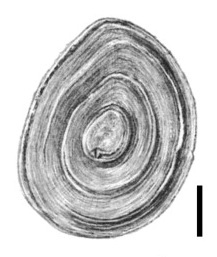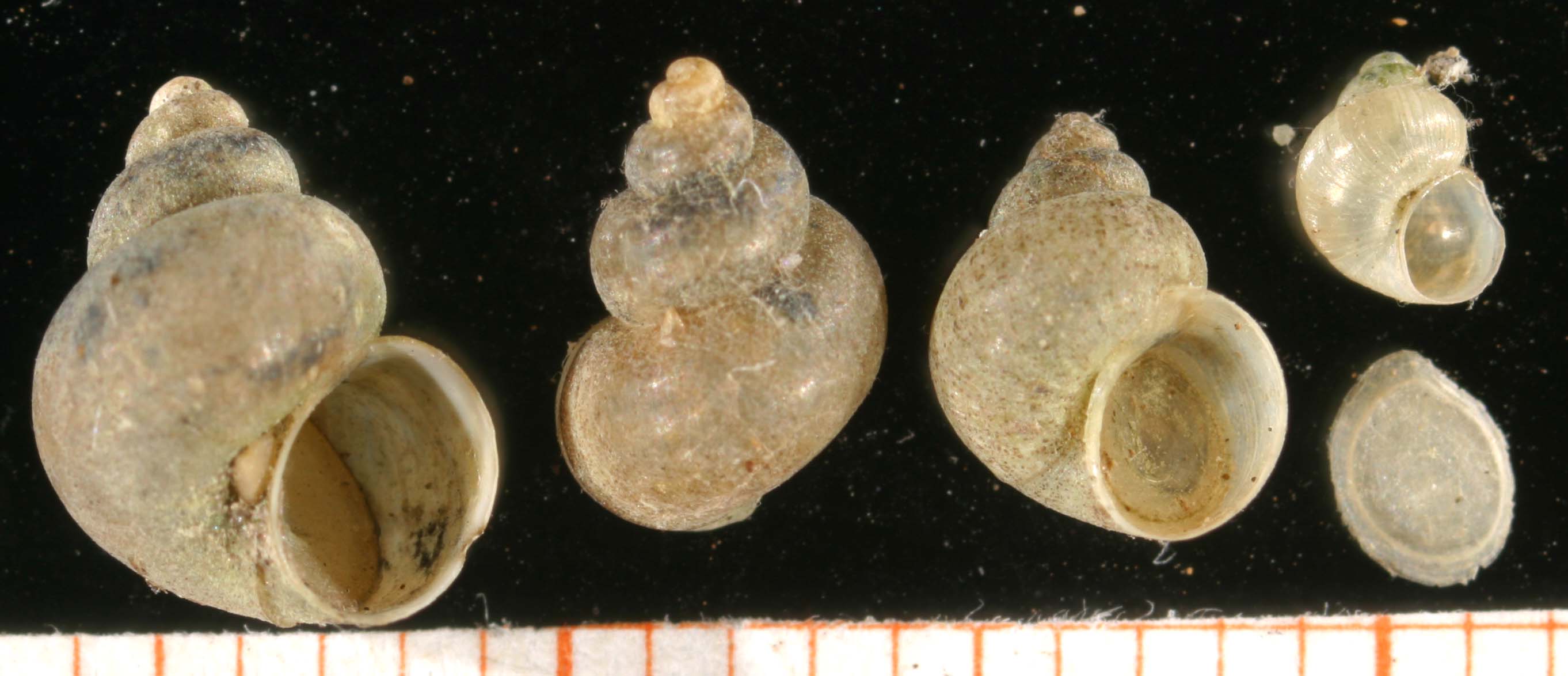|
List Of Molluscs Recorded In Poland
There are approximately 265 species of non-marine molluscs living in the wild in Poland. Systematic list The list is in zoological order rather than alphabetical order. The Polish common name (where one exists) of each mollusc is given first, in parentheses, and then the scientific name. The source for the non-marine species on this list isCLECOM-PROJECT: Checklist of species-group taxa of continental Mollusca living in the Netherlands (CLECOM Section I) 14-07-2002with changes. Gastropoda Neritidae * (rozdepka rzeczna) ''Theodoxus fluviatilis fluviatilis'' (Linnaeus, 1758) ** '' Theodoxus fluviatilis littoralis'' (Linnaeus, 1758) Aciculidae * (igliczek karpacki) ''Acicula parcelineata'' (Clessin, 1911) * (igliczek lśniący) ''Platyla polita'' (Hartmann, 1840) Viviparidae * (żyworódka pospolita) ''Viviparus viviparus'' (Linnaeus, 1758) * (żyworódka rzeczna) ''Viviparus contectus'' (Millet, 1813) Bithyniidae * (zagrzebka pospolita) ''Bithynia tentaculata'' (Linnaeus, ... [...More Info...] [...Related Items...] OR: [Wikipedia] [Google] [Baidu] |
Acicula Parcelineata
''Acicula parcelineata'' is a species of small land snail with an operculum, a terrestrial gastropod mollusc in the family Aciculidae. Distribution This species is found in the Czech Republic (in Moravia only), Horsák M., Juřičková L., Beran L., Čejka T. & Dvořák L. (2010). "Komentovaný seznam měkkýšů zjištěných ve volné přírodě České a Slovenské republiky. nnotated list of mollusc species recorded outdoors in the Czech and Slovak Republics. ''Malacologica Bohemoslovaca'', Suppl. 1: 1-37PDF Slovakia, Poland, Romania, Ukraine.Balashov I. & Gural-Sverlova N. (2012). "An annotated checklist of the terrestrial molluscs of Ukraine". '' Journal of Conchology'' 41(1): 91-109.Skvortsova V. & Balashov I. (2019).Land snail ''Acicula parcelineata'' (Architaenioglossa: Cyclophoroidea: Aciculidae) in Ukraine: distribution, variability, habitat preferences and conservation status. ''Ruthenica ''Ruthenica'' is a genus of air-breathing land snail, a terrestrial pulm ... [...More Info...] [...Related Items...] OR: [Wikipedia] [Google] [Baidu] |
Peringia Ulvae
''Peringia ulvae'' (or ''Hydrobia ulvae''), common name the Laver spire shell or mudsnail, is a European species of very small aquatic snail with gills and an operculum, a gastropod mollusk in the family Hydrobiidae.Gofas, S. (2010). ''Hydrobia ulvae'' (Pennant, 1777). In: Bouchet, P.; Gofas, S.; Rosenberg, G. (2010) World Marine Mollusca database. Accessed through: World Register of Marine Species at http://www.marinespecies.org/aphia.php?p=taxdetails&id=140126 on 2010-11-27. This is arguably a marine snail, but it is often also listed as a non-marine species because it tolerates brackish water and lives in salt marshes and similar habitats. ''Peringia ulvae'' is the type species of the genus ''Peringia''. Distribution This species occurs on the coasts of the Baltic Sea, the White Sea the Eastern Atlantic and the western Mediterranean Sea, (the Mediterranean records may be in error) including: * Great Britain * Ireland * The Netherlands The type locality is "on the shore ... [...More Info...] [...Related Items...] OR: [Wikipedia] [Google] [Baidu] |
George Montagu (naturalist)
George Montagu (1753 – 20 June 1815) was an English army officer and naturalist. He was known for his pioneering '' Ornithological Dictionary'' of 1802, which for the first time accurately defined the status of Britain's birds. He is remembered today for species such as the Montagu's harrier, named for him. Life and work George Montagu was born to James Montagu (1713–1790), who was great-great-grandson of Lord James Montagu (d. 1665), who was younger son of Henry Montagu, 1st Earl of Manchester. Montagu is best known for his '' Ornithological Dictionary'' (1802) and his contributions to early knowledge of British birds. He showed that many previously accepted species were invalid, either because they were birds in summer or winter plumage or males and females of the same species. His study of harriers resulted in the discovery that the Montagu's harrier was breeding in southern England. He was also involved in the first British records of cirl bunting, whose breeding range ... [...More Info...] [...Related Items...] OR: [Wikipedia] [Google] [Baidu] |
Hydrobia Ventrosa
''Ecrobia ventrosa'', common name spire snail, is a European species of small brackish water snail with a gill and an operculum, an aquatic gastropod mollusk in the family Hydrobiidae. Distribution This species occurs on the coasts of: * Iceland * Norway * Great Britain * Ireland * France * Baltic Sea * Black Sea * White Sea Горбушин А. М. О видовом составе моллюсков рода Hydrobia (Gastropoda, Prosobranchia) в Белом море //Зоол. журн. – 1993. – Т. 71. – №. 9. – С. 47–56. The distribution type is coastal Mediterranean–Atlantic. Description For terms see gastropod shell The 3–4 x 1.5–2 mm. shell has 5–7 convex whorls which are slightly more convex than those of ''Hydrobia acuta neglecta''. Smaller shells with 5 whorls are slightly less slender than those of Hydrobia neglecta. The suture is deep. The aperture is rounded upside (or only slightly pointed) and attached to the last whorl. The lip i ... [...More Info...] [...Related Items...] OR: [Wikipedia] [Google] [Baidu] |
Potamopyrgus Antipodarum
The New Zealand mud snail (''Potamopyrgus antipodarum'') is a species of very small freshwater snail with a gill and an operculum. This aquatic gastropod mollusk is in the family Tateidae. It is native to New Zealand, where it is found throughout the country, but it has been introduced to many other countries, where it is often considered an invasive species because populations of the snail can reach very high densities. Shell description The shell of ''Potamopyrgus antipodarum'' is elongated and has dextral coiling, with 7 to 8 whorls. Between whorls are deep grooves. Shell colors vary from gray and dark brown to light brown. The average height of the shell is approximately 5 mm (\begin \frac \end in); maximum size is approximately 12 mm (\begin \frac \end in). The snail is usually 4–6 mm in length in the Great Lakes, but grows to 12 mm in its native range. It is an operculate snail, with a 'lid' that can seal the opening of its shell. The ... [...More Info...] [...Related Items...] OR: [Wikipedia] [Google] [Baidu] |
Hydrobiidae
Hydrobiidae, commonly known as mud snails, is a large cosmopolitan family of very small freshwater and brackish water snails with an operculum; they are in the order Littorinimorpha. Distribution Hydrobiidae are found in much of the world, inhabiting all continents except Antarctica. In Australia alone there are over 260 species in the family. Description These are very small or minute snails, with a shell height of less than 8 mm. The dextrally-coiled shells are smooth (except for growth lines conforming to the shape of the outer lip) and are usually rather nondescript. The shell offers very few robust characteristics to the systematist who is attempting to classify the species within this family. This difficulty is compounded by a high degree of intraspecific variation. Descriptions often have to be based on the characteristics of the operculum, radula and penis. The shell of species within this family varies from planispiral to needle-shaped. The shell may hav ... [...More Info...] [...Related Items...] OR: [Wikipedia] [Google] [Baidu] |
Bithynia Transsilvanica
''Bithynia transsilvanica'' is a species of freshwater snail, an aquatic prosobranch gastropod mollusk in the family Bithyniidae.Bouchet, P. (2013). Bithynia transsilvanica Bielz, 1853. In: MolluscaBase (2017). Accessed through: World Register of Marine Species at http://www.marinespecies.org/aphia.php?p=taxdetails&id=717163 on 2017-04-01 Taxonomy It was sometimes considered to be an eastern subspecies of ''Bithynia leachii'', and then it was known as ''Bithynia leachii troschelii''. Specific epithet ''troschelii'' of its synonym is in honor of German zoologist Franz Hermann Troschel. Distribution * Czech Republic - It was thought to be locally extinct in Moravia and was considered as regionally extinct in the Czech Republic (RE). There were rediscovered populations in southern Moravia near Lednice and from Nesyt pond in 2008. It was also discovered in Bohemia as a non-indigenous. Horsák M., Juřičková L., Beran L., Čejka T. & Dvořák L. (2010). "Komentovaný seznam ... [...More Info...] [...Related Items...] OR: [Wikipedia] [Google] [Baidu] |
Bithynia Leachii
''Bithynia leachii'' is species of small freshwater snail with an operculum, an aquatic prosobranch gastropod mollusk in the family Bithyniidae. Distribution It is a Palearctic species found in North Africa and Europe to East Siberia. * Czech Republic – near Morava River and near Thaya river in the southernmost Moravia near Hlohovec, Kostice and Tvrdonice, Horsák M., Juřičková L., Beran L., Čejka T. & Dvořák L. (2010). "Komentovaný seznam měkkýšů zjištěných ve volné přírodě České a Slovenské republiky. nnotated list of mollusc species recorded outdoors in the Czech and Slovak Republics. ''Malacologica Bohemoslovaca'', Suppl. 1: 1–37PDF critically endangered (CR) * Germany – high endangered (''Stark gefährdet'') * Netherlands * Poland * Slovakia – in Danube drainage basin (mainly in Žitný ostrov) and in Tisza drainage basin * Sweden * Great Britain * Ireland * Hungary Shell description The width of the shell is 3–7 mm. The height of ... [...More Info...] [...Related Items...] OR: [Wikipedia] [Google] [Baidu] |
Bithynia Tentaculata
''Bithynia tentaculata'', common names the mud bithynia or common bithynia, or faucet snailKipp R. M. & Benson A. (2008). ''Bithynia tentaculata''. USGS Nonindigenous Aquatic Species Database, Gainesville, FL. https://nas.er.usgs.gov/queries/FactSheet.asp?speciesID=987 Revision Date: 2/28/2007. is a relatively small species of freshwater snail with gills and an operculum, an aquatic prosobranch gastropod mollusk in the family Bithyniidae. Taxonomy ''Bithynia tentaculata'' is the type species of the genus ''Bithynia''. Forms of ''Bithynia tentaculata'' include: * ''Bithynia tentaculata'' f. ''codia'' * ''Bithynia tentaculata'' f. ''excavata'' * ''Bithynia tentaculata'' f. ''gigas'' * ''Bithynia tentaculata'' f. ''producta'' Menke, 1828 * † ''Bithynia tentaculata tellinii'' Sacco, 1886 The variety † ''Bithynia tentaculata'' var. ''allobrogica'' Fontannes, 1881: synonym of † '' Bithynia minor'' Locard, 1878 Distribution Indigenous distribution The distribution of ''Bith ... [...More Info...] [...Related Items...] OR: [Wikipedia] [Google] [Baidu] |
Bithyniidae
Bithyniidae is a family of small freshwater snails with an operculum, aquatic gastropod molluscs in the clade Littorinimorpha.Bouchet, P.; Gofas, S. (2015). Bithyniidae Gray, 1857. In: MolluscaBase (2015). Accessed through: World Register of Marine Species at http://www.marinespecies.org/aphia.php?p=taxdetails&id=182697 on 2016-02-28 Their minute shell is often colored. They are characterized by a calcareous operculum, a lobe on the upper surface of the neck. The ctenidium, the respiratory gill-comb, is very broad. They have a ciliary feeding habit. The kidney has a large extension towards the mantle. Genera Genera in the family Bithyniidae include: * '' Alocinna'' Annandale & Prashad, 1919 * ''Bithynia'' Leach, 1818 - type genusGlöer P. (2002). ''Die Süßwassergastropoden Nord- und Mitteleuropas''. Die Tierwelt Deutschlands, ConchBooks, Hackenheim, 326 pp., . Reference for subgenera of genus ''Bithynia''. ** Subgenus ''Bithynia'' Leach, 1818 ** Subgenus '' Codiella'' Locard ... [...More Info...] [...Related Items...] OR: [Wikipedia] [Google] [Baidu] |
Viviparus Contectus
''Viviparus contectus'', common name Lister's river snail, is a species of large, freshwater snail with an operculum and a gill, an aquatic gastropod mollusk in the family Viviparidae, the river snails. Distribution This species is palaearctic in distribution, specifically Europe and western Siberia, including: * Great Britain, specifically eastern England * Netherlands * Germany - endangered (''3 gefährdet'') * Austria * Czech Republic - near threatened (NT) Horsák M., Juřičková L., Beran L., Čejka T. & Dvořák L. (2010). "Komentovaný seznam měkkýšů zjištěných ve volné přírodě České a Slovenské republiky. nnotated list of mollusc species recorded outdoors in the Czech and Slovak Republics. ''Malacologica Bohemoslovaca'', Suppl. 1: 1-37PDF * Slovakia Slovakia (; sk, Slovensko ), officially the Slovak Republic ( sk, Slovenská republika, links=no ), is a landlocked country in Central Europe. It is bordered by Poland to the north, Ukraine to the ea ... [...More Info...] [...Related Items...] OR: [Wikipedia] [Google] [Baidu] |




